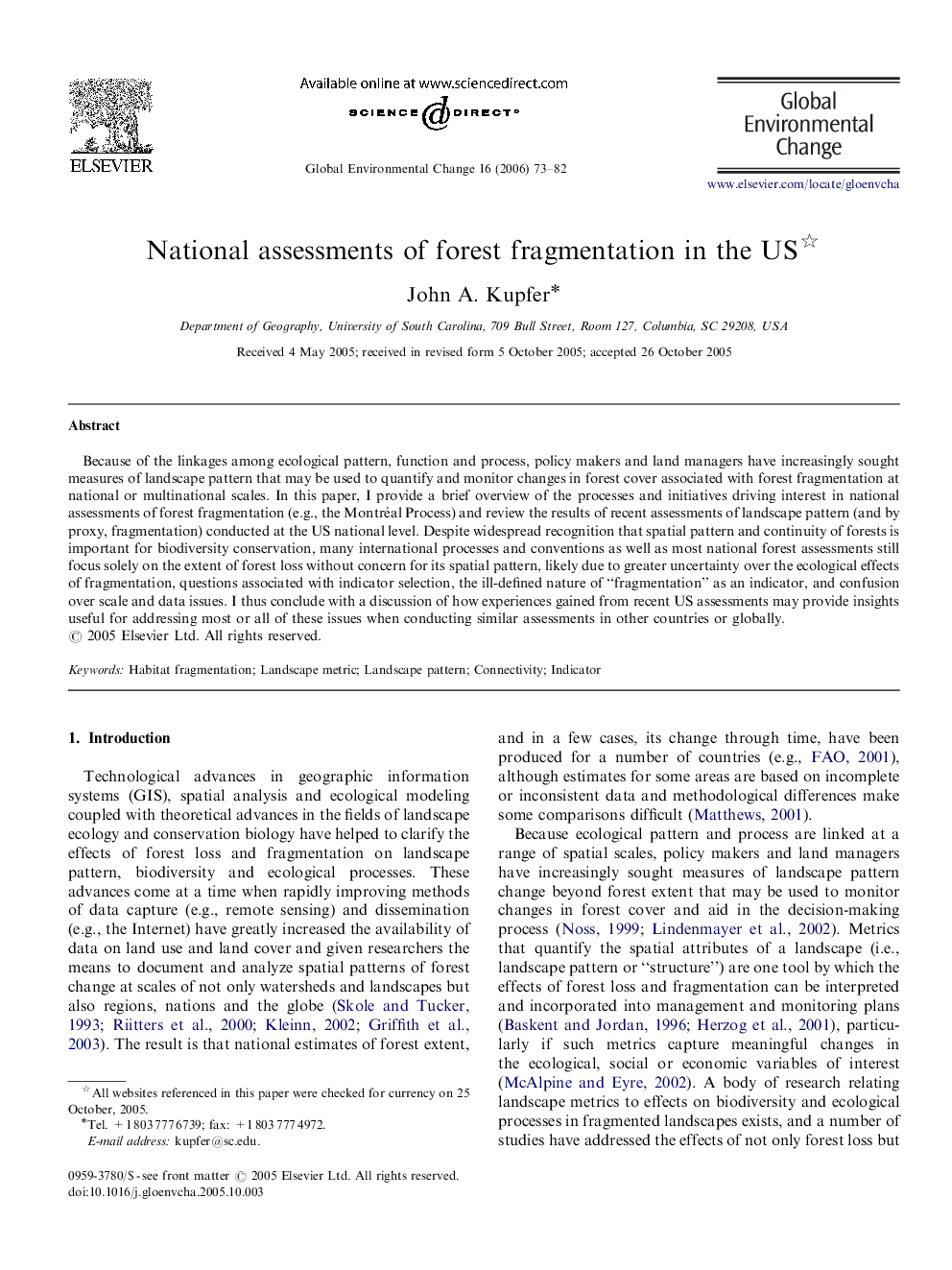| Article ID | Journal | Published Year | Pages | File Type |
|---|---|---|---|---|
| 1055128 | Global Environmental Change | 2006 | 10 Pages |
Because of the linkages among ecological pattern, function and process, policy makers and land managers have increasingly sought measures of landscape pattern that may be used to quantify and monitor changes in forest cover associated with forest fragmentation at national or multinational scales. In this paper, I provide a brief overview of the processes and initiatives driving interest in national assessments of forest fragmentation (e.g., the Montréal Process) and review the results of recent assessments of landscape pattern (and by proxy, fragmentation) conducted at the US national level. Despite widespread recognition that spatial pattern and continuity of forests is important for biodiversity conservation, many international processes and conventions as well as most national forest assessments still focus solely on the extent of forest loss without concern for its spatial pattern, likely due to greater uncertainty over the ecological effects of fragmentation, questions associated with indicator selection, the ill-defined nature of “fragmentation” as an indicator, and confusion over scale and data issues. I thus conclude with a discussion of how experiences gained from recent US assessments may provide insights useful for addressing most or all of these issues when conducting similar assessments in other countries or globally.
